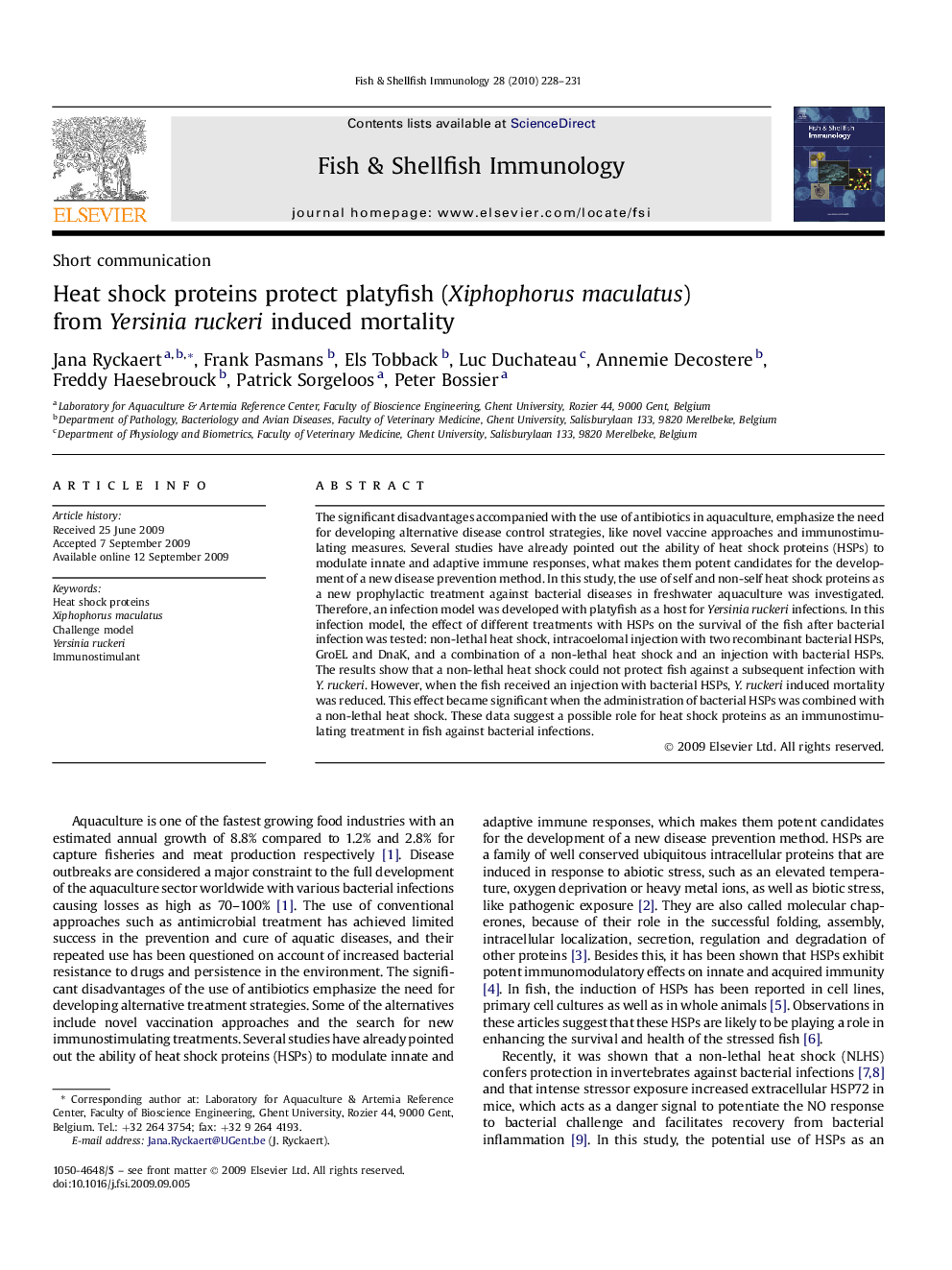| Article ID | Journal | Published Year | Pages | File Type |
|---|---|---|---|---|
| 2432936 | Fish & Shellfish Immunology | 2010 | 4 Pages |
The significant disadvantages accompanied with the use of antibiotics in aquaculture, emphasize the need for developing alternative disease control strategies, like novel vaccine approaches and immunostimulating measures. Several studies have already pointed out the ability of heat shock proteins (HSPs) to modulate innate and adaptive immune responses, what makes them potent candidates for the development of a new disease prevention method. In this study, the use of self and non-self heat shock proteins as a new prophylactic treatment against bacterial diseases in freshwater aquaculture was investigated. Therefore, an infection model was developed with platyfish as a host for Yersinia ruckeri infections. In this infection model, the effect of different treatments with HSPs on the survival of the fish after bacterial infection was tested: non-lethal heat shock, intracoelomal injection with two recombinant bacterial HSPs, GroEL and DnaK, and a combination of a non-lethal heat shock and an injection with bacterial HSPs. The results show that a non-lethal heat shock could not protect fish against a subsequent infection with Y. ruckeri. However, when the fish received an injection with bacterial HSPs, Y. ruckeri induced mortality was reduced. This effect became significant when the administration of bacterial HSPs was combined with a non-lethal heat shock. These data suggest a possible role for heat shock proteins as an immunostimulating treatment in fish against bacterial infections.
